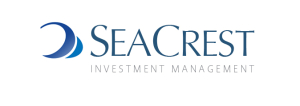Last year was arguably one for the records books given the intense volatility during the fourth quarter. Despite the US equity markets closing at all-time highs in late September, most asset classes ended the year on a negative note. The S&P 500 delivered a total return of negative 4.39%; the Dow Jones Industrial Average was down 3.48%; the NASDAQ returned a negative 2.81%; the iShares iBoxx High Grade Corporate Bond Exchange Traded Fund (ETF ticker: LQD) was down 3.79%, while its high yield version, the largest “junk-bond” ETF by assets (ticker: HYG), had a negative return of 2.02%.
These figures do not seem extreme after nine plus years of economic growth given the considerable increase in market volatility levels experienced during October, November and December. The Dow Jones had the largest daily point gain in its long history on December 26, 2018, with an upside move of 1,086 points, second only to a positive change of 936 points that occurred on October 13, 2008. On a percentage basis however, the 2008 change was much more significant than the one last year. The 2018 occurrence did, however, make the top 10 list of highest daily percentage changes. On the flip side, of the top 10 daily point losses, 2018 took five spots, with the remaining five having taken place in 2001 and 2008. In terms of daily percentage losses, 2018 took two spots on the top 10 list. Clearly, the volatility during the year was abundant.
Early in the year, Jerome Powell took over the reins of the Federal Reserve Bank and continued its tightening policies. For many on Wall Street, the Federal Funds Rate policy remained behind the curve for most of the year as both, the US and Global economies, continued to exhibit modest strength. That changed during the second half as early signs of exhaustion began to manifest themselves. We continue to believe that the pace of tightening in 2018 was a major contributing factor to the pressure the equity markets experienced in December. Having said that, only forthcoming economic data will tell how much further, and at what pace, the US economy will grow in an already stretched economic cycle. Another source of risk in 2018 was the global trade tensions between US-Mexico-Canada, as well as, US and China. As the USMCA agreement was crystallized, greater focus was placed on the ongoing US-China trade negotiations. The question remains as to how the intense focus on trade conflicts this year will impact the more than a half a century of the globalization trend. It is our belief that the US-China dispute will be resolved amicably with a robust trade agreement. The Chinese economy has already slowed appreciably and could use a stimulus.
Lastly, we cannot conclude a review of 2018 without a mention of the ever growing volatility and hostility in Washington post the mid-term elections. With the Democrats having gained a majority in the House of Representatives, the level of animus with the Executive branch has reached a fever pitch. If our elected officials are to govern, this great divide must be bridged for the good of the nation.
As we look into 2019, we believe that international equity markets provide a greater opportunity for better relative returns than the US markets. Corporate and high yield spreads, having widened considerably during last year, are likely to contract with “spread product” warranting a greater allocation versus Treasuries. The economic impact of the benefits of the tax law changes, at the personal and corporate level, will diminish in the year ahead.
Stay tuned!
